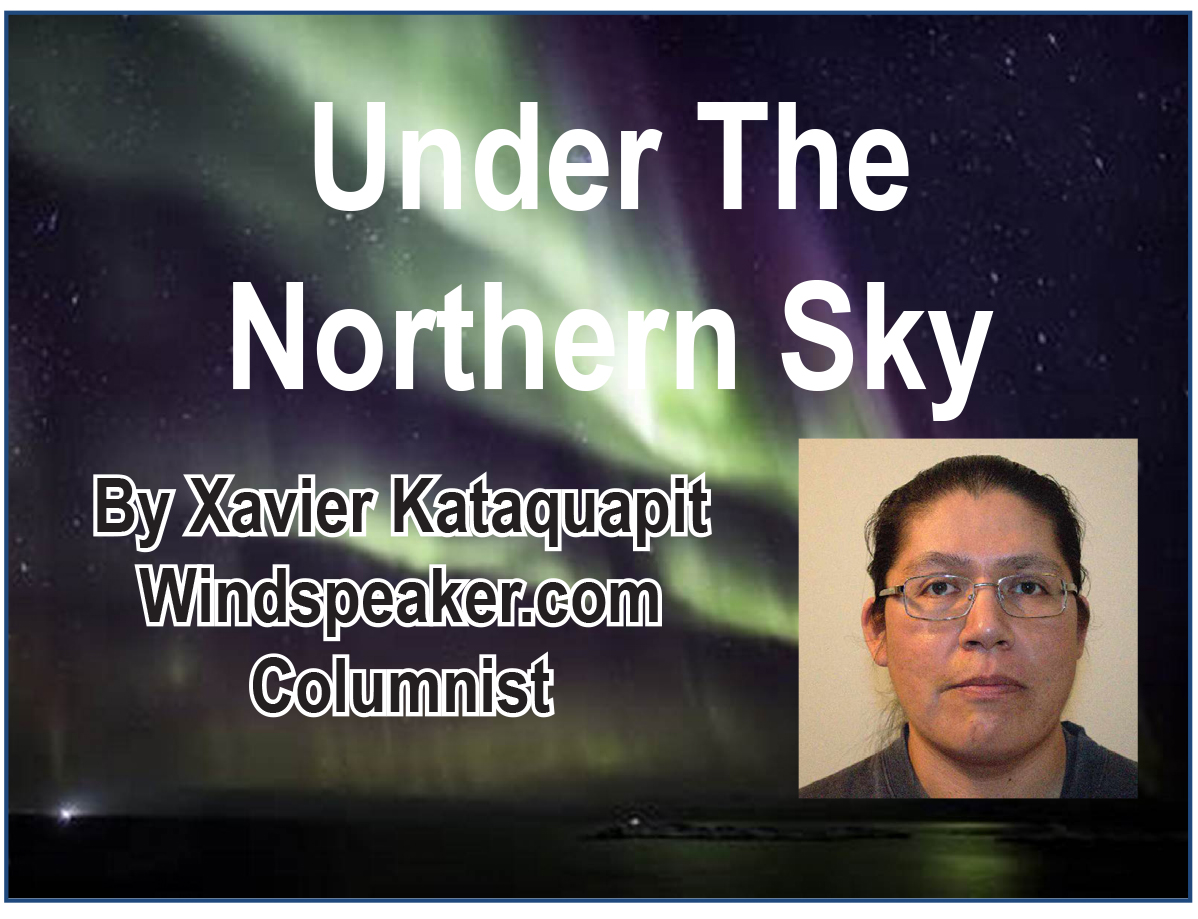
By Xavier Kataquapit
My nephew Willie Wesley dropped in for a visit recently. He arrived with his wife Delores and his young sons Brayden and Liam. It was good to sit with them outside in the shade and share some stories in our Cree language. It is always a treat for me to be able to chat in my original language and it helps me to keep the words of my ancestors alive.
Willie, Delores, eight-year-old Brayden and two-month-old Liam are heading out on an adventure as they move back up north to Fort Albany, the ancestral home of Delores. Willie is from Attawapiskat. They are excited about their move after spending years in North Bay.
To make sure that he could transport some of his heavier possessions up to Fort Albany, Willie decided to embark on a major two-and-a-half day expedition up the Albany River from a launch point at Calstock First Nation along this historic waterway. He was thinking of making the trip alone but was advised that the boat ride was a difficult, confusing and possibly a dangerous one. He and Delores were relieved when her father Joseph Nakogee of Fort Albany accepted to help his son-in-law with the long haul up the river.
Willie was raised from birth in Attawapiskat with a very traditional life on the land. He learned much from his grandparents, who are my own parents, Marius and Susan and, of course, Willie’s parents Brian and Janie, who is my sister. Willie travelled on the land in the winter by snowmobile and summer by boat for fishing and hunting trips from the time he could walk.
Even though he is in his 20s he has a lot of knowledge of the land, traditional life and survival skills. He got the chance to expand his knowledge over several days of travelling a new river route to him but thankfully a familiar one for his father-in-law Joseph.
The fact that Joseph had travelled the Albany River many times in the past meant that he knew the flow and way of this great and historic water way. Joseph had a challenge with this trip because he had to deal with driving Willie’s 16-foot aluminum boat with a 30 horsepower motor to push it along while hauling a heavy load.
Amazingly, Willie managed to fit his boat trailer snugly onto the boat along with a steel bed frame and some heavy tools. Due to the heavy load the motor was only capable of pushing the watercraft up the river at about 15 miles an hour.
They slept the first night on the land at a moose camp in a portable pop-up ice hut, and on the second night they camped along the river bank. On their route they saw three moose and a couple of eagles. Willie was amazed at Joseph’s knowledge of the waterway as he pointed out many islands by name and tributaries as they slowly made their way up the Albany. They had to cross two sets of rapids but the going was steady and Joseph expertly got them through safely.
I know that Willie felt vulnerable with no way to communicate with the outside world as they wound their way up the river. They had a GPS, but they knew that they were very much just specks in the vast wilderness of northern Ontario. Joseph’s knowledge of the dangerous and shallow spots along the river ensured there were no mishaps on their adventure.
Willie’s grandfather and my dad Marius would have been very proud of him on this adventure up the Albany. Marius was on the land at a very early age and he was only 14 back in the 1940s when he first started guiding American fisherman up to remote waterways far north of Attawapiskat. His knowledge of the land and the stars was enormous and he managed to pass a lot of that traditional information to his children.
There is so much history on the Albany River for our country and our province, but especially to our people, the James Bay Cree. The Albany River has been an important Indigenous water way for thousands of years and for many hundreds of years was used by the English and French fur traders.
Willie was surprised to know that every First World War veteran from Attawapiskat, Kashechewan and Fort Albany would have travelled south as a group along this river to access the rail line near Pagwa rail station just west of Calstock. When they returned several years later, they arrived in small groups or as individuals, dropped off at the station and simply told to go home on their own. During different seasons of the year, they walked or snowshoed and if they found a canoe, floated back to their homes after having served their country.
Like most adventures under the guidance of someone like Joseph with so much experience on the land, I knew that Willie also benefited by the conversations he had with his guide as they slipped along on the rapid, wide river. I am sure he had a feeling that many spirits of that river were with him on his journey and that will surely help him on his way into the future.
This famous river still has more stories to create and I am sure that Willie and his two sons and their grandfather Joseph will travel along this waterway many more times in the years to come.
